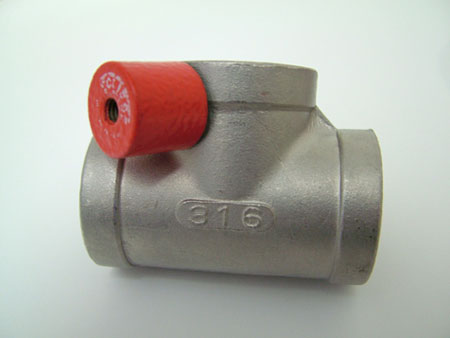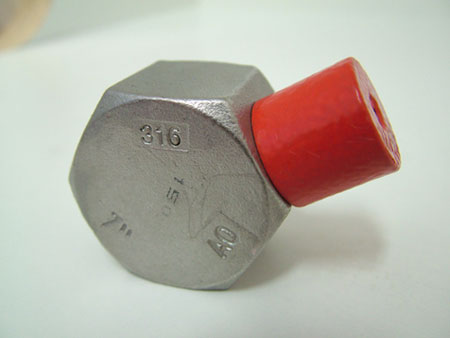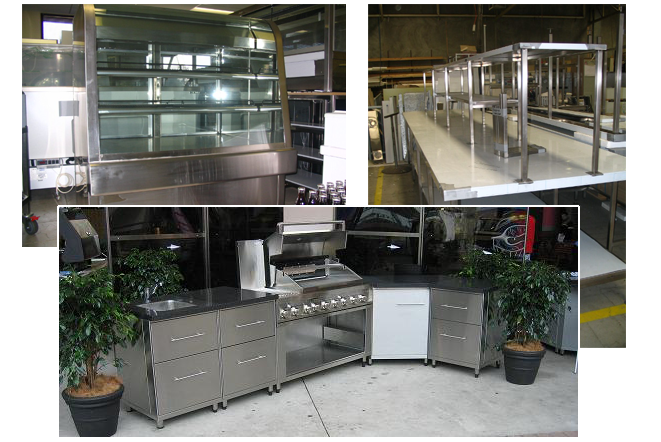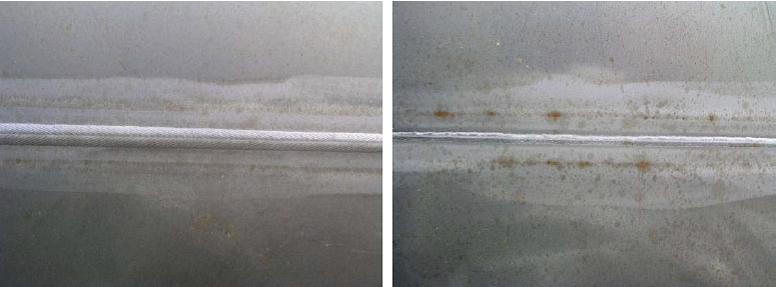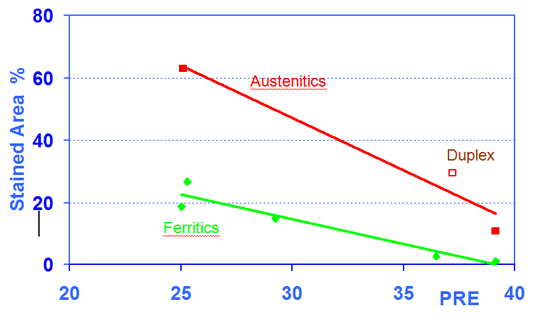Is Stainless Steel Magnetic?
 |
Stainless Steel - Magnetism & Corrosion Resistance - There Is No Connection |
| There is a myth in the stainless steel industry that stainless steel is not magnetic. Or that if it is magnetic, the stainless steel is not stainless. Magnetism and corrosion resistance are not connected. Corrosion resistance depends on how much chromium and (sometimes) molybdenum is in the stainless steel. The higher the chromium and molybdenum, the better corrosion resistance. |
Find out how fast we could deliver to your facility, what prices we can offer or let us help you choose the right product for you.
Corrosion resistance depends on how much chromium and (sometimes) molybdenum is in the stainless steel. The higher the chromium and molybdenum, the better corrosion resistance. The magnetism myth is because the common magnetic grades of stainless steel, 409 and 430, don't resist corrosion as well as the common non-magnetic grades, 304 and 316. You can't expect them to. Grade 409 has 11% of chromium, which is plenty for automotive muffler systems. Grade 430 has 16% of chromium, and is mostly used indoors. Grade 304 has 18% of chromium, which makes it suitable for general purposes, including outdoor exposures. And in marine environments you need Grade 316, which has 16% chromium and also 2% of molybdenum to help it resist the attack of salt. 316 is known as marine grade. So the common non-magnetic stainless steels have better corrosion resistance than the common magnetic grades because they have more chromium and molybdenum. 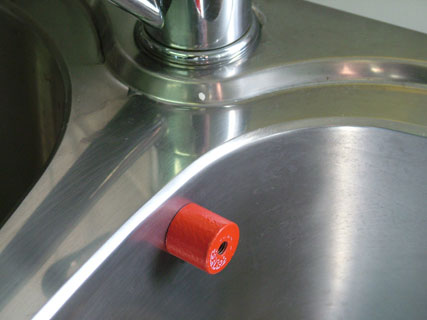 For the technically minded, in the non-magnetic grades the atoms are lined up in a crystal structure known as austenite. In the common magnetic grades the atoms are lined up in a crystal structure known as ferrite - just like in carbon steel. So 304 and 316 are often called austenitic grades, and 409 and 430 are called ferritic grades. It's not even true that the "non-magnetic" grades are never magnetic. As supplied, sheet and coil are non-magnetic, but when they are worked - bent, deep drawn, formed into a tube - they become magnetic. Try a fridge magnet around the bowl of your kitchen sink, which is grade 304 - you might be surprised. The strength of the magnetism depends on how much the metal has been deformed. Even when these grades are cut (cold, by shearing) the deformation in the edge of the metal causes magnetism. Stainless steel bolts are made by cold forging the head, and cold rolling or machining the thread. They are often quite strongly magnetic. Cast austenitic grades are likely to crack in the casting process if they aren't formulated to be somewhat magnetic - the same applies to welds. So castings are usually magnetic, unless they have been heat treated. Here are a pipe elbow, and a cap nut, both Grade 316, as cast.
Then there are the duplex grades of stainless steel, well known for their excellent corrosion resistance. They are all fully magnetic all the time. The best known duplex grade, 2205, resists corrosion even better than 316 because it contains 22% of chromium and 3% of molybdenum. Austral Wright Metals stock two New Generation ferritic stainless steel grades, AWM 404GP® and 445M2. Both are magnetic, because both are ferritic. Both have at least 21% of chromium, which is more than the grade they replace, and much higher than Grade 430. AWM 404GP® replaces 304, and 445m2 replaces 316 - it contains 1% of molybdenum. These grades offer significant advantages: corrosion resistance at least as good as the grade they replace, cost savings in the workshop because they are much easier to fabricate, and price savings because they do not contain the element used to make grades non-magnetic - nickel. Add price stability, because the cost of nickel is volatile - over the last five years it has varied from $15,000/tonne to over $60/000/tonne. That's between A$1,200 and $4,800 on the cost of a tonne of 304 and 316. Table of Stainless Steel Compositions
*PRE (Pitting Resistance Equivalent) is used to rank the corrosion resistance of stainless steels. The higher the value, the better the corrosion resistance. PRE allows selection of grades for corrosion tests on the basis of experience with known grades. The New Generation ferritic stainless steel grade AWM 404GP® and 445M2 are high technology, cost effective alternatives to the older grades 304 and 316. The only extra "traps for young players" in converting from the older are the need to ensure that before welding the sheet and any filler rod are grease free, and to gas shield the weld properly. Ferritic Grades behave like carbon steel in fabrication, and many customers have told Austral Wright Metals how much they appreciate the lower shearing forces, cleaner, crisper bends, lower distortion in welding and flatter panels achieved. These cost saving features are in addition to the 3.5% more coverage per kilogramme that ferritic grades give. AWM 404GP® and 445M2 are made by world class Asian Steel mills, who use state-of-the-art technology to produce top quality, superior steels.
Atmospheric Corrosion Tests of New Generation Ferritic Stainless SteelsSevere Marine Atmosphere, 2 years
This graph shows that ferritic grades show superior tea staining resistance to austenitic and duplex grades of the same PRE:
| ||||||||||||||||||||||||||||||||||||||||||||||||||||||||||||||||||||||||||||||||||||||||||||||||||||||||||||||||||||||||||||||
The technical advice and recommendations made in this Product Data Sheet should not be relied or acted upon without conducting your own further investigations, including corrosion exposure tests where needed. Please consult current editions of standards for design properties. Austral Wright Metals assumes no liability in connection with the information in this Product Data Sheet. Austral Wright Metals supplies a comprehensive range of stainless steels, copper alloys, nickel alloys and other high performance metals for challenging service conditions. Our engineers and metallurgists will be pleased to provide further data and applications advice. |

